Every year in the mushroom-season, the Tromsø Mushroom Society arrange mushroom check-points at the Tromsø University Museum where the general public can have their collected mushrooms identified. They also invite to guided tours and celebrate “Mushroom Day”. NorBOL attended all check-points so far this year and has received plenty of species for DNA barcoding.
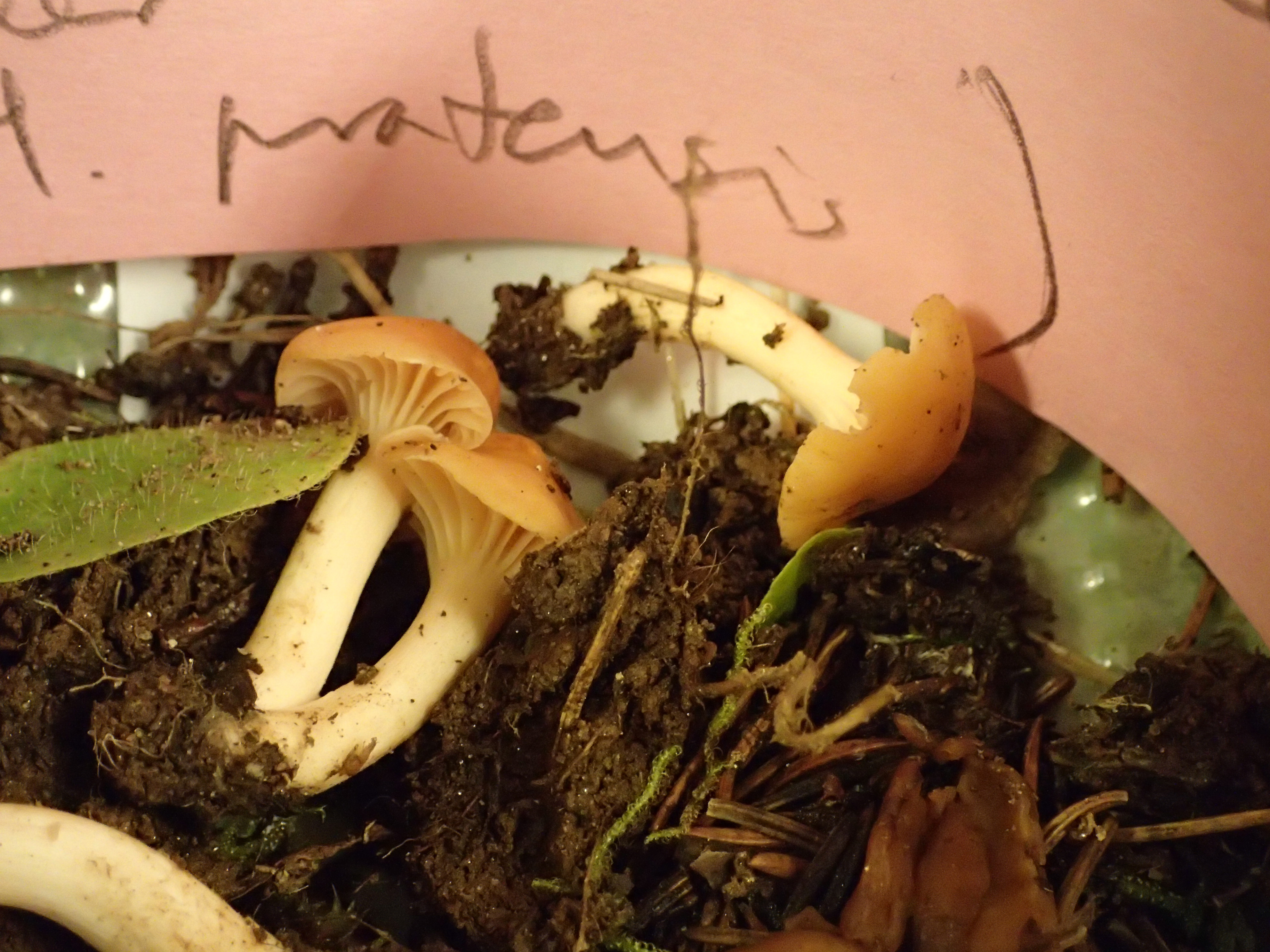 One of the sampled mushrooms: Hygrocybe cf. pratensis. Photo Marie K. Føreid Merkel CC-BY.
One of the sampled mushrooms: Hygrocybe cf. pratensis. Photo Marie K. Føreid Merkel CC-BY.
“Mushroom Day” was held at Tromsø University Museum on September 4th and included an exhibition of freshly picked specimens as well as the regular check-point and a local guided tour. NorBOL attended the event and received about 20 new species for barcoding. Most of these came from the exhibition made by the Mushroom Society, but some were also donated by the visitors.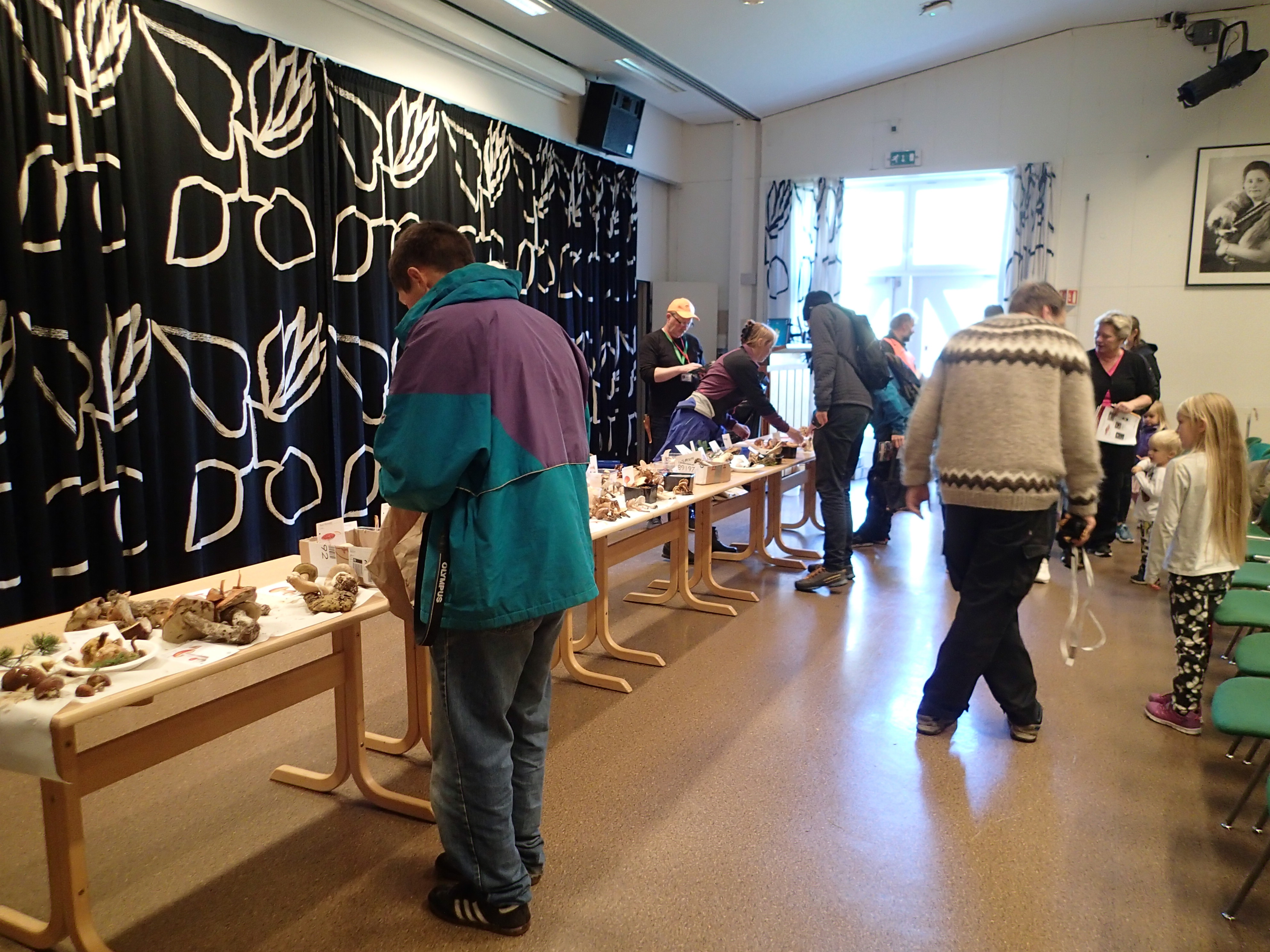 Mushroom exhibition on Mushroom Day. Photo Marie K. Føreid Merkel CC-BY.
Mushroom exhibition on Mushroom Day. Photo Marie K. Føreid Merkel CC-BY.
During collection of specimens for the exhibition, one new species to North Norway was found. This specimen will be barcoded. NorBOL staff used the opportunity to talk to visitors about DNA barcoding, the work that they do and how mushrooms are preserved and stored in the scientific collections at the museum. So far, NorBOL har received more than 120 species from the area of Tromsø, with great help from the Mushroom Society.
We hope that the last to check-point dates (11 and 18 September) will bring in even more specimens, and that we can continue our outreach on DNA-barcoding to the general public. Thanks to the Tromsø Mushroom Society for excellent collaboration!
Marie K. Føreid Merkel
Is environmental DNA barcoding of water and benthos samples more effective than traditinonal methods in biological monitoring of freshwater ecosystems? This is one of the questions researchers at the NTNU University Museum, BIO, NINA, NIVA and ZFMK wish to answer in the project “Environmental barcoding av aquatic invertebrates (EBAI)”.
A team from the project recently visited Rondane National Park where both water and benthic invertebrates were collected from the River Døråla. The invertebrates were fixed on ethanol while water was filtered through different filter types.
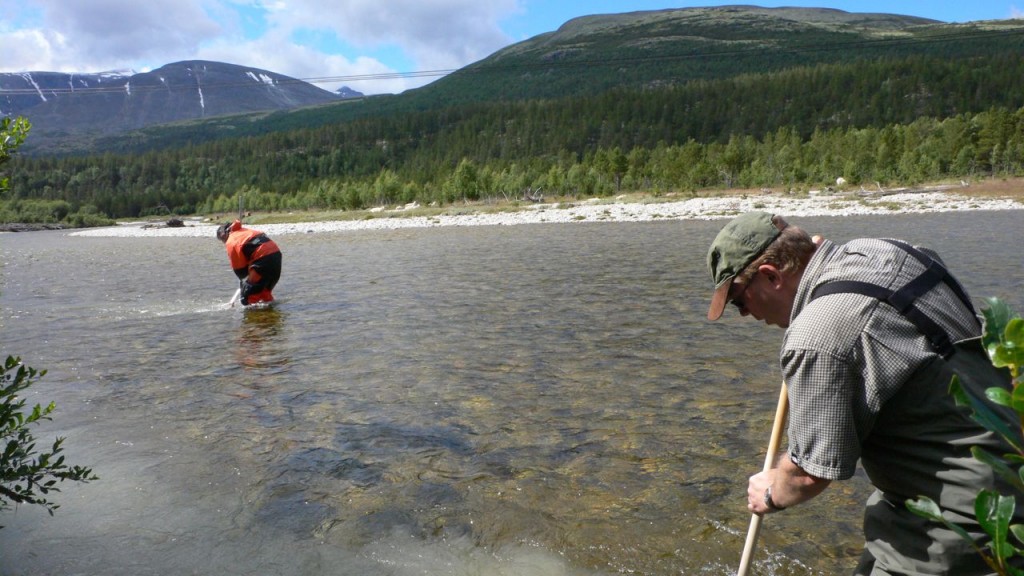 Terje Bongard (NINA) and Karstein Hårsaker (NTNU University Museum) performing kick sampling at Vollen. Photo: Torbjørn Ekrem (CC-BY).
Terje Bongard (NINA) and Karstein Hårsaker (NTNU University Museum) performing kick sampling at Vollen. Photo: Torbjørn Ekrem (CC-BY).
Post doctor Markus Majaneva and PI Torbjørn Ekrem at the NTNU University Museum reports on a very successful fieldwork where not even strong winds and rain could stop filtering of the water samples in the mobile laboratory (in the back of a car). The first results from the experiments are expected towards the end of 2015 or the beginning of 2016.
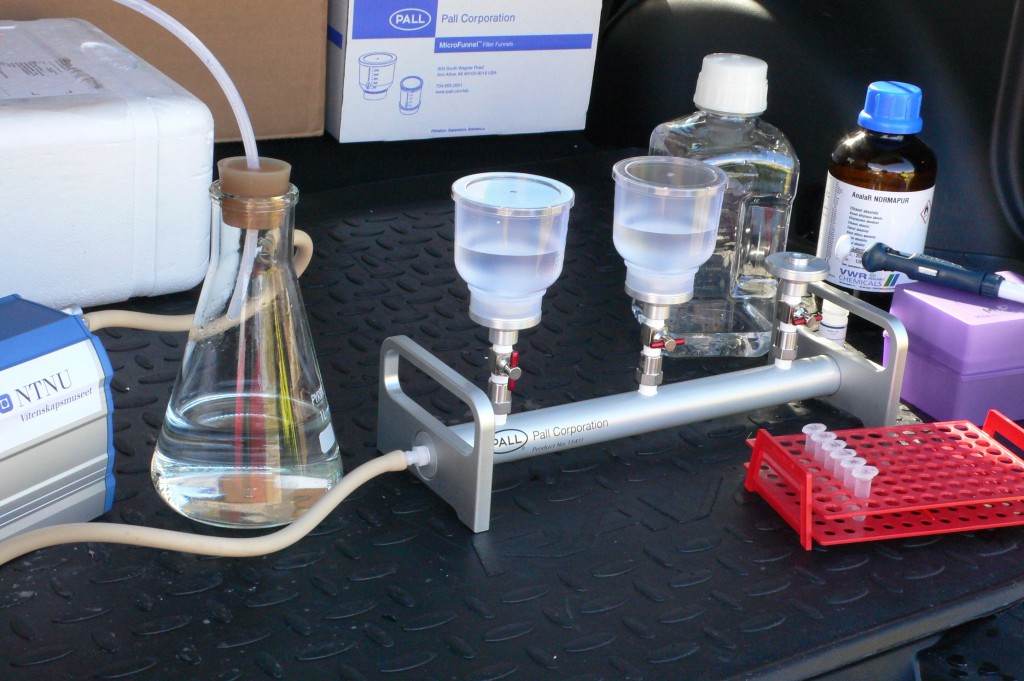 Filtering water. Photo Torbjørn Ekrem (CC-BY).
Filtering water. Photo Torbjørn Ekrem (CC-BY).
The project is funded by the Research Council of Norway and the Norwegian Environment Agency.
The marvellous fungal season of 2014 in southern Norway provided a kick-start to the barcoding of Norwegian bacidiomycetes for the BOLD-library.
Barcoders from the Natural History Museum in Oslo were given the opportunity to join the annual meeting of the Norwegian mycological and useful plants association. The 120 participants shared their findings and their knowledge with us, and 405 species were collected for DNA barcoding at the meeting in Sørmarka, south of Oslo. We are very pleased with this result. Thanks you to all participants!
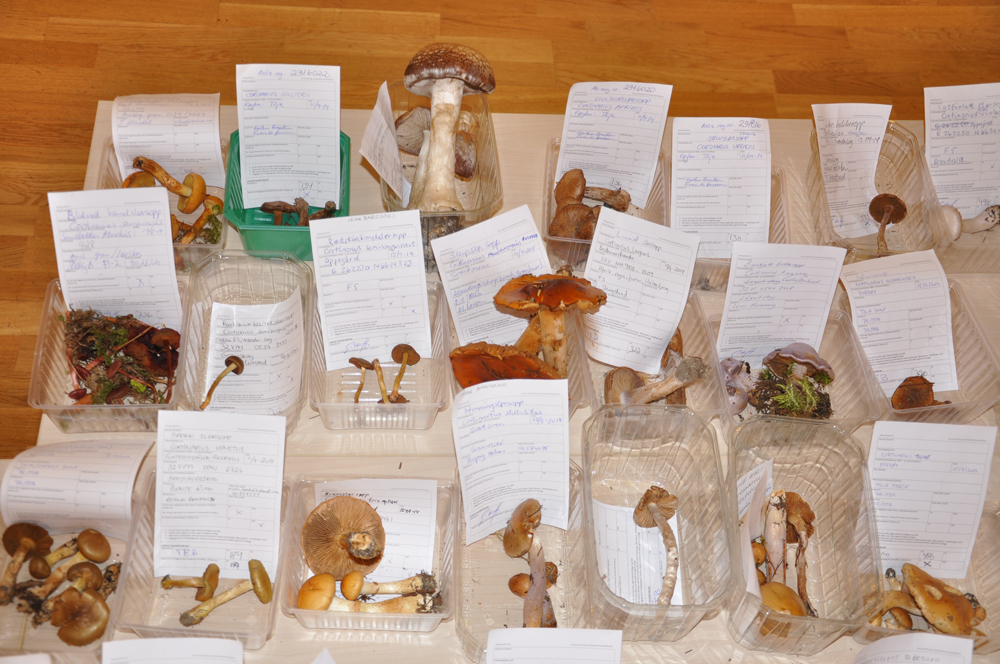
Text and photo: Gunnhild Marthinsen.
 One of the sampled mushrooms: Hygrocybe cf. pratensis. Photo Marie K. Føreid Merkel CC-BY.
One of the sampled mushrooms: Hygrocybe cf. pratensis. Photo Marie K. Føreid Merkel CC-BY. Mushroom exhibition on Mushroom Day. Photo Marie K. Føreid Merkel CC-BY.
Mushroom exhibition on Mushroom Day. Photo Marie K. Føreid Merkel CC-BY.
 English
English  Norwegian Bokmål
Norwegian Bokmål 

